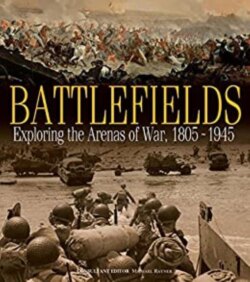Читать книгу Battlefields - Michael Rayner - Страница 36
На сайте Литреса книга снята с продажи.
FEREY STEMS THE ONSLAUGHT BUT GETS OUTFLANKED
ОглавлениеWellington switched his attention to his left. With the Light Division fighting Foy’s, he ordered Major General Sir Colin Campbell’s division to come off their ridge and take the Grande. The remaining French quit the position, leaving their guns. Two of the Army of Portugal’s seven divisions remained intact, but Foy’s was being hard pressed and only Ferey’s, on high ground southeast of the Grande across the French line of retreat, could prevent a rout.
HEAVY AND LIGHT HORSEMEN
The ‘heavies’ were shock-action, melee troops riding into battle, boot to boot for maximum impact, with their long, straight swords pointed directly at their enemy.
The ‘lights’ were mounted on smaller, lighter horses (below 14.2 hands). Theoretically they were not part of the battle line, but performed reconnaissance and security roles, only joining in pursuits to disperse and slice down runaways with their curved sabres.
In practice both heavy and light horsemen saw themselves as ‘battlefield cavalry’ for whom charge at the gallop was the principal tactic.
Wellington rides into Salamanca at the head of a regiment of Hussars.
Wellington ordered Clinton’s division to go straight at Ferey’s. Making excellent use of broken country, rising ground and open slopes, Ferey poured musket and canister into Clinton’s leading regiments and a devastating firefight ensued. Clinton’s first line was shattered. Units from Cole’s and Leith’s formations made up an ad hoc second line, and Hope’s division came up as support. Cohesion was breaking down as tiredness grew and the divisional generals improvised as best they could. Ferey’s men doggedly clung to their ground. Another bloody firefight caused Clinton’s second line to retire and, almost crippled, this brave French division prepared to meet the next wave. As the two exhausted forces began volleying each other the remnants of Pakenham’s arrived and drove into their flank. Ferey was killed and the line broke. Now only Foy’s could offer any resistance, and the light division ensured they were absorbed in trying to get off without being overwhelmed.
SQUARES, INFANTRY AND CAVALRY
Infantry formed tight squares as protection against cavalry, because the formation has no flank or rear and horses will shy away from the massed bayonets. However, squares are densely packed, easy targets for cannon. Massed infantry can march up close to the square, stop and fire, because three sides of the square are looking in different directions and cannot fire back. Napoleonic generals tried to use their cavalry to force enemy infantry into squares which they then battered with their cannon and then broke with their infantry bayonets, finally letting the cavalry chase and destroy the remnants.
The wreck of the Army of Portugal fled southeastward towards the deep, wide River Tormes which curved south, behind the French position. There were only two crossings: the fords of Huerta and the bridge at Alba de Tormes. Believing a Spanish garrison of 2000 held the bridge, Wellington ordered Hope’s division to advance upon Huerta. Apparently only Foy used the fords. General Don Carlos d’España had withdrawn his Spaniards from Alba without orders two days before, so the French escaped over the bridge. However, they were a defeated force. They had lost over 14,000 men, two divisional generals, 20 guns, two eagles and six standards, and Wellington had confirmed himself a master of the offensive battle.
